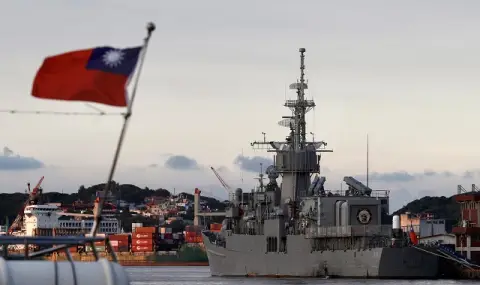China is once again trying to intimidate the island of Taiwan with a show of military force. However, Taiwan is neither unprepared nor defenseless. The country has a ready strategy on how to successfully defend itself against possible aggressions.
Taiwan condemned Chinese military maneuvers in the region that began on Thursday as an "irrational provocation" and mobilizes its sea, air and land units. Beijing considers Taiwan a Chinese territory that should be "unified" with the mainland of the country – including by force.
To improve its defense capabilities, in recent years, Taipei has greatly increased defense spending and expanded its war-fighting capabilities. The island relies heavily on a strategy of using smaller but effective weapons to make Beijing understand that an eventual invasion of the island would be extremely costly and risky for it.
What does asymmetric defense mean?
Taiwan is betting on capabilities that will allow it to prevent a Chinese landing on the island through a combination of anti-ship missiles, sea mines and other small and relatively inexpensive weapons systems. This includes the use of unmanned aerial vehicles, including the domestically developed "Albatross II" drone. In addition, cheap munitions and mobile cruise missiles for coastal defense could destroy the expensive ships and equipment of the Chinese navy.
Fast attack boats with a “Stealth“ coating, making them difficult to detect by radars, as well as small vessels that can be used to deliver rapid missile strikes, are part of this relatively cheap but quite effective equipment. Sea mines and fast mine-laying boats could also make it difficult for China to land on the island.
Geographic advantages
Another advantage of Taiwan is its geographical location: a large-scale invasion of the island would require the deployment of hundreds of thousands of troops in the Taiwan Strait, a long and difficult operation involving thousands of vulnerable ships.
Furthermore, the long monsoon season makes landing on the island only possible during a few months of the year. It will also be hampered by the lack of more deep-water ports or large enough coastal spaces needed to unload force and equipment. The east coast of Taiwan, on the other hand, is too rocky and represents a natural barrier to a large-scale invasion. And shallow waters along the west coast would force ships to drop anchor far from shore.
Sea mines combined with missile-equipped speedboats can hit attackers at their most vulnerable point. Taiwan's naval units can pre-store ammunition along the coast and on nearby islands. And this means that the Chinese army will hardly be able to secure a reliable bridgehead for a large-scale invasion of the island. But even if he succeeds, the mountainous terrain of the island will make it extremely difficult for the units to move, and the capital, Taipei, is located in a valley surrounded on all sides by mountains, which creates ideal conditions for organizing a reliable defense.
With the methods of guerrilla warfare
In case the Chinese army succeeds in invading the island, Taiwan has prepared its cities for guerrilla warfare: man-portable air defense systems (MANPADS) and mobile anti-tank weapons such as missile systems (HIMARS) can be used to wage war in urban conditions.
However, Taiwan also has more powerful weapons systems. The agreement concluded with the US only allows for the supply of defensive weapons. Taiwan is currently awaiting the delivery of $19 billion worth of US military equipment, including fighter jets, tanks, missiles and smaller weapons.
